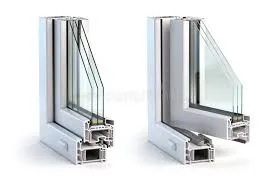How to Adjust Sliding Door Wheels for Smooth Operation and Easy Use
Adjusting Sliding Door Wheels A Comprehensive Guide
Sliding doors are a popular choice in homes and commercial spaces due to their space-saving design and ease of use. Over time, however, these doors may start to slide unevenly or become difficult to operate. One common reason for these issues is the misalignment or wear of the sliding door wheels. Adjusting these wheels can restore the smooth functionality of your sliding doors, making the process manageable even for those without extensive DIY experience. In this article, we will delve into the steps required to adjust sliding door wheels effectively.
Understanding the Mechanism
Before diving into the adjustment process, it's crucial to grasp how sliding door wheels function. Sliding doors generally operate on a track system where the wheels, mounted at the bottom or top of the door, help facilitate smooth movement. Over time, these wheels can become misaligned due to wear and tear, causing the door to stick or not close correctly. Therefore, adjusting the wheels can often resolve these common issues.
Tools Required
To adjust sliding door wheels, you'll need a few essential tools
1. Screwdriver - Most often, a Phillips-head screwdriver will suffice. 2. Pliers - Handy for gripping or pulling parts if necessary. 3. Level - To ensure that your door is horizontally aligned after adjustments. 4. Lubricant - WD-40 or a silicone spray can help the wheels glide smoothly after adjustment.
Step-by-Step Adjustment Process
Step 1 Assess the Problem
Begin by examining the sliding door to identify the issue. Open and close the door to see if it sticks or if there is a gap at the top or bottom. Take note of whether the door is rubbing against the frame or if it is misaligned to one side.
Step 2 Remove the Door
adjusting sliding door wheels

In many cases, you will need to remove the sliding door from its track to make effective adjustments. Lift the door upwards at a slight angle and off the bottom track while tilting it towards you. Be careful, as sliding doors can be heavy.
Step 3 Inspect the Wheels
Once the door is removed, take a close look at the wheels. Check for any visible damage or excessive wear. Sometimes, dirt and debris can accumulate on the wheels, affecting their movement. Use a vacuum or a damp cloth to clean them thoroughly.
Step 4 Adjust the Wheels
Locate the adjustment screws, typically found on the sides of the wheel assembly. Depending on your door model, turning the screws clockwise will raise the door and counter-clockwise will lower it. Adjust both wheels incrementally while frequently checking the door's height. It's essential to maintain even adjustments on both sides to ensure that the door hangs correctly.
Step 5 Reinstall the Door
Once the wheels are adjusted, carefully reinsert the door back onto the track. Align the wheels with the tracks and tilt the door into place. Ensure it sits evenly in the frame.
Step 6 Test the Operation
With the door back in place, slide it open and closed to test its movement. Look for smooth operation without any sticking or rubbing against the frame. If necessary, make further adjustments until the desired alignment is achieved.
Conclusion
Adjusting sliding door wheels may seem like a daunting task, but with the right tools and a bit of patience, you can enhance your door's functionality significantly. Keeping your sliding doors in proper working order not only contributes to their longevity but also ensures a pleasant user experience. Routine maintenance, including cleaning and occasional adjustments, can prevent most issues from arising, allowing you to enjoy the convenience and elegance of sliding doors for years to come. Remember to follow safety guidelines throughout the process, and don’t hesitate to consult a professional if you encounter any challenges.
-
Wrought Iron Components: Timeless Elegance and Structural StrengthNewsJul.28,2025
-
Window Hardware Essentials: Rollers, Handles, and Locking SolutionsNewsJul.28,2025
-
Small Agricultural Processing Machines: Corn Threshers, Cassava Chippers, Grain Peelers & Chaff CuttersNewsJul.28,2025
-
Sliding Rollers: Smooth, Silent, and Built to LastNewsJul.28,2025
-
Cast Iron Stoves: Timeless Heating with Modern EfficiencyNewsJul.28,2025
-
Cast Iron Pipe and Fitting: Durable, Fire-Resistant Solutions for Plumbing and DrainageNewsJul.28,2025
-
 Wrought Iron Components: Timeless Elegance and Structural StrengthJul-28-2025Wrought Iron Components: Timeless Elegance and Structural Strength
Wrought Iron Components: Timeless Elegance and Structural StrengthJul-28-2025Wrought Iron Components: Timeless Elegance and Structural Strength -
 Window Hardware Essentials: Rollers, Handles, and Locking SolutionsJul-28-2025Window Hardware Essentials: Rollers, Handles, and Locking Solutions
Window Hardware Essentials: Rollers, Handles, and Locking SolutionsJul-28-2025Window Hardware Essentials: Rollers, Handles, and Locking Solutions -
 Small Agricultural Processing Machines: Corn Threshers, Cassava Chippers, Grain Peelers & Chaff CuttersJul-28-2025Small Agricultural Processing Machines: Corn Threshers, Cassava Chippers, Grain Peelers & Chaff Cutters
Small Agricultural Processing Machines: Corn Threshers, Cassava Chippers, Grain Peelers & Chaff CuttersJul-28-2025Small Agricultural Processing Machines: Corn Threshers, Cassava Chippers, Grain Peelers & Chaff Cutters












